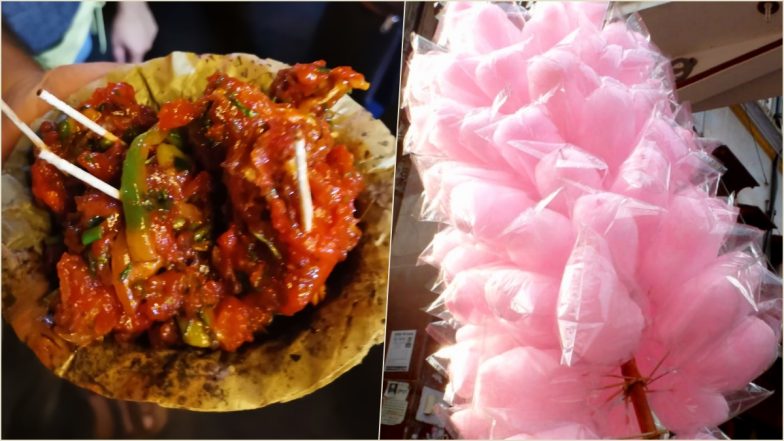Dig colours in your food? Whether it is a giant cotton candy or some street desi Chinese, these attractive colours do leave us drooling. Last month, the Karnataka government prohibited the usage of Rhodamine B artificial colour in ‘gobi manchurian’ and ‘cotton candy’. Despite being banned in many countries for use in food products due to its potential health risks, Rhodamine-B is still used illegally in some regions to enhance the colour of certain foods. It’s vibrant pink-to-red hue makes it appealing for use in foods like sweets, candies, and beverages, where it can impart an attractive appearance. However, its unauthorized use poses serious health risks, including carcinogenicity and potential harm to organs such as the liver and kidneys. Liquid Nitrogen, Dry Ice, Synthetic Sweetener Saccharin, Rhodamine-B in Cotton Candy and Manchurian and Ethylene Oxide in Spices! Foods to Avoid for Kids as Well as Adults.
What is Rhodamine-B?
Rhodamine-B is a synthetic dye that is commonly used in various industries, including textiles, cosmetics, and food. In the food industry, Rhodamine-B is sometimes used illegally to enhance the color of certain food products, particularly in countries where its use is not regulated or monitored. However, the use of Rhodamine-B in food is highly controversial due to its potential health risks.
Health Risks and Side Effects of Rhodamine-B in Food
One of the main concerns regarding Rhodamine-B is its potential carcinogenicity. Studies have shown that exposure to high levels of Rhodamine-B may increase the risk of developing cancer, particularly bladder cancer. As a result, many countries have banned or restricted the use of Rhodamine-B in food products.
In addition to its potential carcinogenic effects, Rhodamine-B has also been linked to other health issues. For example, studies have suggested that exposure to Rhodamine-B may cause genetic damage and have toxic effects on the liver and kidneys. It is also known to be a skin and eye irritant, and inhalation of Rhodamine-B dust or fumes can cause respiratory issues.
Due to these health concerns, it is important for consumers to be aware of the potential risks associated with Rhodamine-B and to avoid consuming food products that may contain this synthetic dye. To reduce the risk of exposure to Rhodamine-B, consumers should always read food labels carefully and avoid products with suspiciously vibrant or unnatural colors. Additionally, regulatory authorities should continue to monitor and regulate the use of Rhodamine-B in food products to ensure the safety of consumers.
(The above story first appeared on LatestLY on Apr 24, 2024 04:25 PM IST. For more news and updates on politics, world, sports, entertainment and lifestyle, log on to our website latestly.com).




